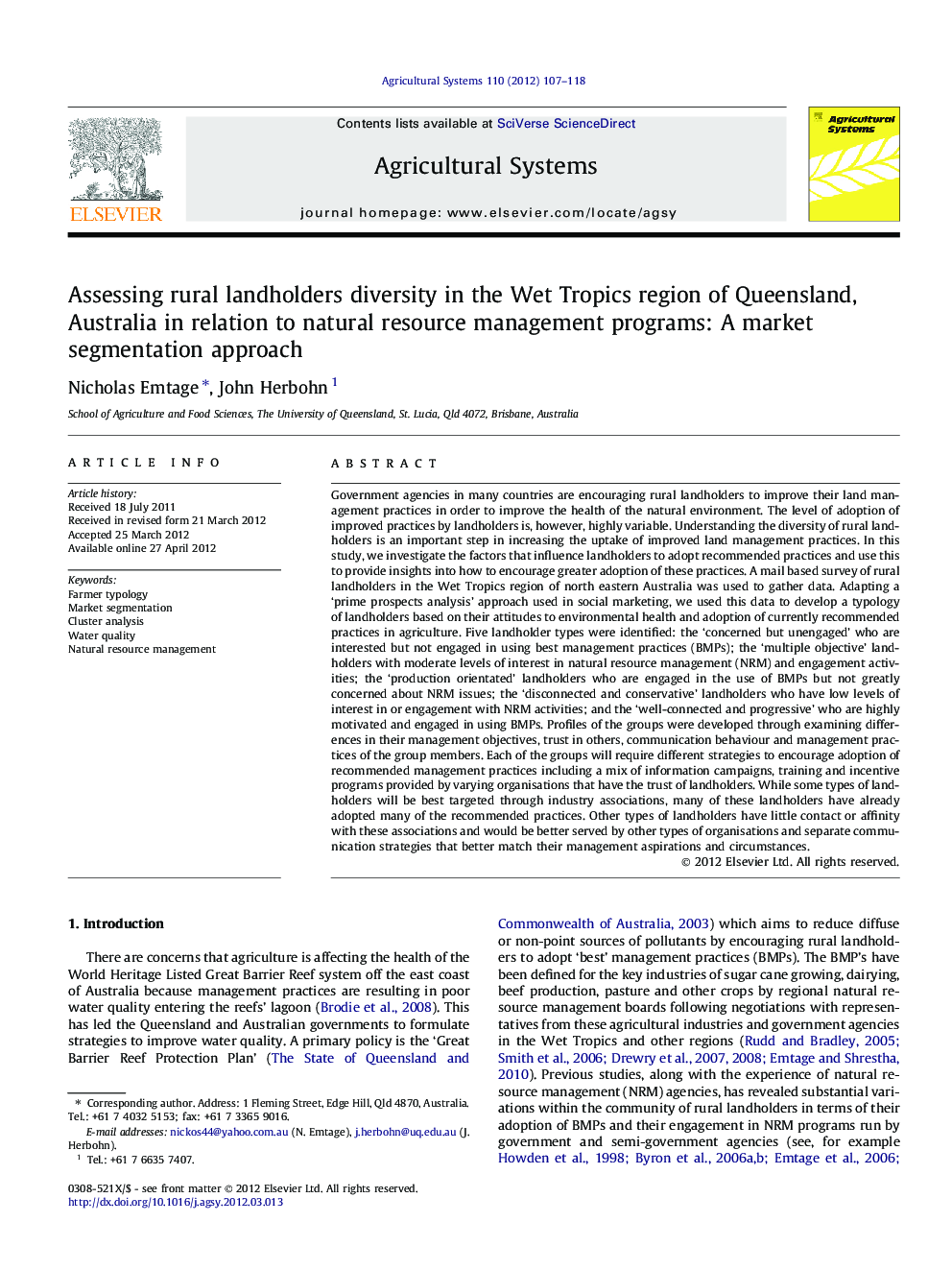| کد مقاله | کد نشریه | سال انتشار | مقاله انگلیسی | نسخه تمام متن |
|---|---|---|---|---|
| 6368703 | 1623260 | 2012 | 12 صفحه PDF | دانلود رایگان |

Government agencies in many countries are encouraging rural landholders to improve their land management practices in order to improve the health of the natural environment. The level of adoption of improved practices by landholders is, however, highly variable. Understanding the diversity of rural landholders is an important step in increasing the uptake of improved land management practices. In this study, we investigate the factors that influence landholders to adopt recommended practices and use this to provide insights into how to encourage greater adoption of these practices. A mail based survey of rural landholders in the Wet Tropics region of north eastern Australia was used to gather data. Adapting a 'prime prospects analysis' approach used in social marketing, we used this data to develop a typology of landholders based on their attitudes to environmental health and adoption of currently recommended practices in agriculture. Five landholder types were identified: the 'concerned but unengaged' who are interested but not engaged in using best management practices (BMPs); the 'multiple objective' landholders with moderate levels of interest in natural resource management (NRM) and engagement activities; the 'production orientated' landholders who are engaged in the use of BMPs but not greatly concerned about NRM issues; the 'disconnected and conservative' landholders who have low levels of interest in or engagement with NRM activities; and the 'well-connected and progressive' who are highly motivated and engaged in using BMPs. Profiles of the groups were developed through examining differences in their management objectives, trust in others, communication behaviour and management practices of the group members. Each of the groups will require different strategies to encourage adoption of recommended management practices including a mix of information campaigns, training and incentive programs provided by varying organisations that have the trust of landholders. While some types of landholders will be best targeted through industry associations, many of these landholders have already adopted many of the recommended practices. Other types of landholders have little contact or affinity with these associations and would be better served by other types of organisations and separate communication strategies that better match their management aspirations and circumstances.
⺠Many landholders are not engaged in current programs and require change in approach. ⺠Five types of rural landholders are identified in the Wet Tropics region of Queensland. ⺠Types can be used to better target natural resource management policies and programs. ⺠Varied types require differing program objectives and communication strategies.
Journal: Agricultural Systems - Volume 110, July 2012, Pages 107-118